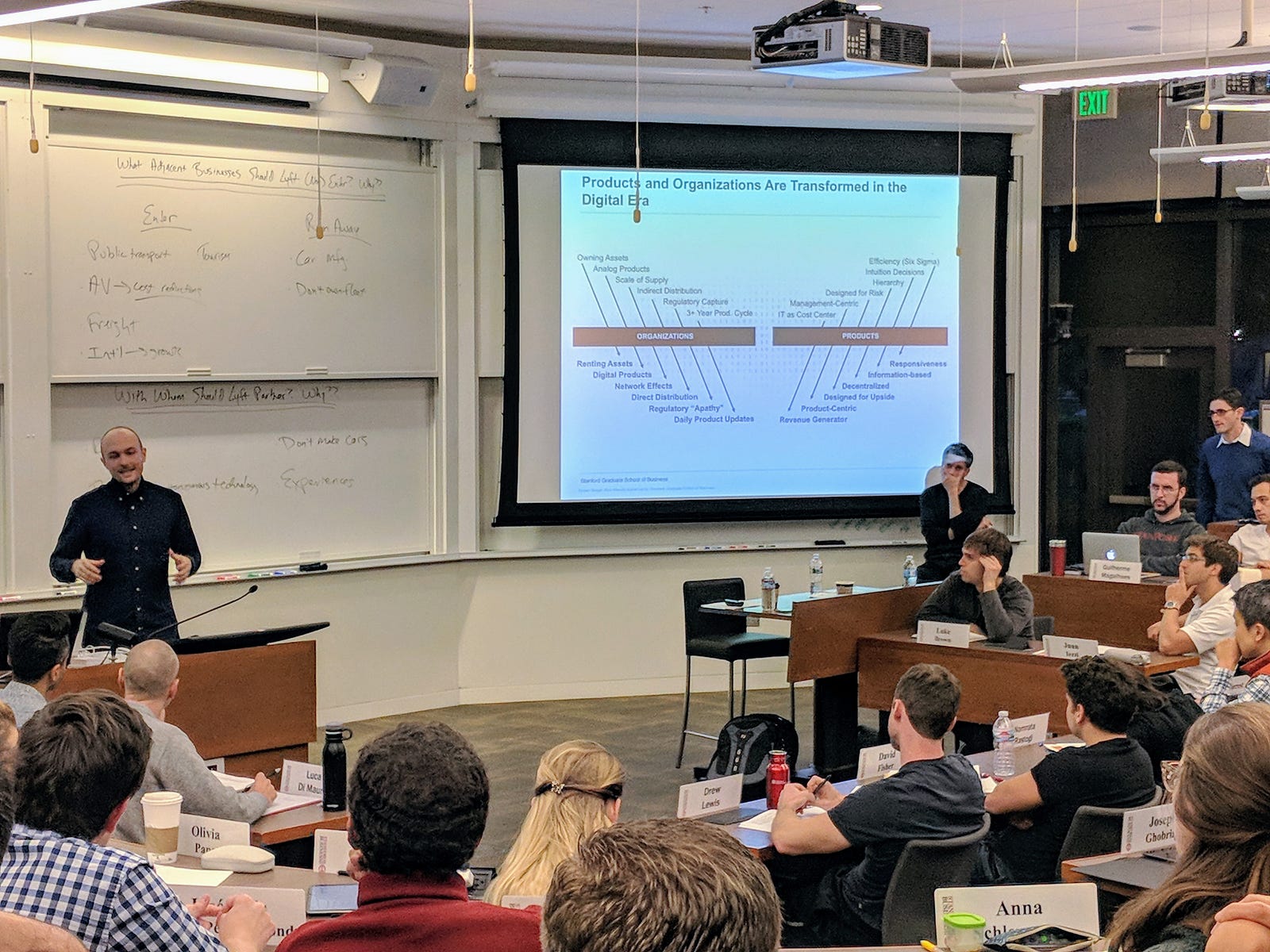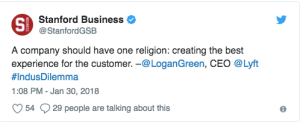This article was written by XSeed Partner, Robert Siegel and appeared in The Industrialist’s Dilemma.
We kicked off the first of six new guests in this year’s version of The Industrialist’s Dilemma with Logan Green, Co-Founder and CEO of Lyft. Logan shared his insights and a vision of the future of mobility as we explored in depth the relationship between interdependence and modularity in his industry. Most of the classroom discussion surrounded our attempt to define where economic rents would accrue in the next two decades brought about by the spread of autonomous vehicles, ride sharing, and societal changes of how work and living spaces would evolve in urban centers.

Winning the Customer Trumps the Finance Business Model
One of the most interesting discussions surrounded the assertion that as this $2 trillion per year market moves from a model of automotive ownership to transportation by hire, the value for riders will come from companies delivering high quality and reliable services on a consistent basis. Logan described a future where the key bases of competitive advantage would surround quality experiences for users through wide availability of vehicles and acceptable ride encounters. The discussion posited that the mobility value chain would be driven by owning the customer relationship, enabling high quality and safe rides with vehicles that were either interchangeable or, if largely reserved for a single person or family, maintained and taken care of as a service by a third party.
The teaching team saw parallels to today’s airline industry in this vision, where aircraft are manufactured by a few large suppliers, the customer relationship is owned by companies that control fleet management, and the nature of travel looked through the lenses of convenience, availability and quality determine the bases of competitive advantage. In such a world, thinking of what parts of the customer experience must be owned led the students to speculate on what Lyft and others will look like going forward. Being great at asset management and operations might, over time, become the key variables of the customer value proposition — not just data ownership.
Speaking of Data, Not All Data Is Created Equal
The class could not come to consensus on what type of data would be of most value over time for companies. Some posited that the ability to know what type of entertainment was consumed in a new generation of autonomous vehicles would lead to aggregation of profits like what we see on the internet — in the hands of those who serve the ads (e.g. Google and Facebook today). Others thought that the value of gathering data about autonomous vehicle training would eventually reach a plateau, as once the vehicles were taught how to navigate in various conditions additional information would have marginally less and less value. In addition, if governments drive the sharing of information on safety as they do today in the airline industry, it will be almost impossible for one company or a small group of companies to have this as a unique competitive moat. Yet a third group of students thought that the value of real-time data will have the most value for driving fleet capacity utilization, which is what could ultimately drive profits in the sector.
While the class believed that software and data will have long-term value in a way that it doesn’t today in the mobility industry, the class was strongly split on the long-term winners.

Scale and Speed With Almost Unlimited Unknowns (for Now)
At one point Logan mentioned that massive changes are being made in this enormous industry on a monthly basis. While it may be 5–10 years before we have full autonomous vehicles in large numbers on roads around the world, the activities that will lead to this future are happening today at unprecedented speed, and at a scale that will impact not only this multi-trillion a year industry, but also adjacent ones, as well. What types of other industries will be formed as the mobility world is transformed? What other services will come into existence that are not practical today but will be possible in the future (e.g. mobility services for non-emergency medical transportation, mobility services as part of a subscription service to lock-in customer loyalty, etc.)? And how will companies such as Lyft and Daimler evolve in such a rapidly changing environment?
Now in our third year of researching and teaching in the mobility market, the unknowns and possibilities seem just as big, dynamic and quickly changing as when we started. This story is still being written, and we do not believe will be decided for years.
